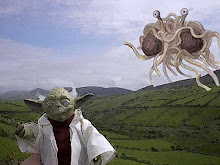We present seven examinations of mysteries both genuine and artificial to show how pseudoscience deals with ancient mysteries.
I: FOUR MYSTERIES STILL UNEXPLAINED
The genuine mysteries of the world seem to pale in comparison to the exaggerated and faked mysteries alternative authors put forward. These four quick looks at genuine ancient mysteries are, like all true mysteries, a little vague and short on details. For these puzzles from the past, more research is clearly needed to show where fact and fiction merge. . .
 UNDERWATER RUINS
UNDERWATER RUINS Legends of lost continents like Atlantis, Lemuria and Mu aside, tantalizing remains of underwater architecture still remain unexplained. Among the most prominent submarine ruins is the (in)famous Bimini Road, discovered in 1968. This miles-long complex of stonework that resembles a road or the walls of buildings is officially classified as a natural formation, but many people believe that the arrow-straight lines and right-angle turns imply an artificial source. Divers also report that patterns formed by the stones resemble the ground plans of Mayan temples. . .
On the other side of the world, Nan Madol, pictured above, is one of the great stone structures on earth. Its basalt megaliths form temples, palaces and other buildings with upturned corners so that they resemble boats. The native people remember legends that beneath the original Nan Madol, down in the ocean, is the primeval Nan Madol built during the glorious reign of the gods. Great stone pillars of this ancient city can still be seen off the island of Ponape. . .
Off the southernmost island of Japan, the Yonaguni Monument has created a heated controversy because of its resemblence to megalithic temples in South America and the Pacific islands. Japanese researchers have declared the structure man-made and 9,000 years old while American geologists like Robert Schoch, the man who claims the Sphinx dates from 7000 B.C., say Yonaguni is a natural formation. The underwater mysteries remain unexplained.
CROSS CULTURAL EXCHANGE
Still on the roster of unsolved mysteries is the question of just how much contact ancient cultures had with one another. Recently the story of the Egyptian cocaine mummies has reopened questions long thought answered. Analysis of Egyptian mummies has turned up traces of cocaine in hair follicles, implying that the Ancient Egyptians chewed coca leaves, a plant found only on the continent of South America.
The United States has had many cases of mysterious stones and markers bearing writing variously attributed to Phonecians[sic], Egyptians, Vikings and Celts. While the vast majority of these are obviously racist hoaxes designed to bolster Euro-American claims to Native American lands, at least a handful of these artifacts have not been explained. In addition, late twentieth-century research confirmed that Vikings had colonized a portion of eastern Canada, the famous Vinland, during the eleventh century.
An archaeological team announced in 2001 that Roman coins had been discovered underneath the floor of an Aztec temple, proving that Roman goods had been present in the New World before Columbus. This dovetailed on reports of a Roman-style sculpture discovered in Mexico and Roman amphorae in Brazil. While some of these goods could have arrived through ships blown off course or by conquistadors bringing a bit of home with them, this mystery remains unexplained.
ANCIENT TECHNOLOGY
In 1901, an ancient clock-like mechanism surfaced off the coast of the Greek island of Antikythera. The original 1959 Scientific American article on the device called it "the most complex scientific object that has been preserved from antiquity." The Antikythera Computer, as it is now called, had apparently been used to calculate the position of the stars as an aid to navigation. This computer predates the supposed invention of clockwork gears by millennia and is still considered only a curiosity by mainstream science. However, it is unlikely that the only Greek computer ever built would have been preserved, so presumably there were others.
Many sources comment on the exquisite workmanship of ancient artifacts. There have been rumors of archaic vessles made out of platinum or aluminum, metals not used in the West until the nineteenth century. Unfortunately, most of these objects seem to exist only in the pages of alternative histories and are nearly always described as "missing" or "lost." Consequently, it is impossible to comment on the veracity of most claims of ancient metalurgy, but an analysis of the remains of metal clamps used to hold together the blocks of the ancient Andean city of Tihuanaco seems to imply that the alloy used needed a higher smelting temperature than most archaeologists believe Andean peoples could generate. These mysteries require more investigation before they can be safely tucked away. (see Dendera Lightbulb and Coso Artifact below)

THOSE MIGHTY MEGALITHS
Despite nearly a century of theorizing, no one has been able to certainly determine how ancient peoples moved the massive megaliths that make up ancient buildings. Such structures seem to defy attempts to explain them away. While many competent theories have been proposed (and many more incompetent ones), no one can claim to completely solve the mystery of the megaliths.
At Ollantaytambo, above, to take one example, a series of polygonal megaliths weighing upwards of 70 to 100 metric tons each are fitted together in an immense jigsaw puzzle of a wall over 260 feet tall. What makes this more amazing is that all of the immense stones had been transported 195 feet up the side of a mountain from a quarry located five miles away and almost 3,000 feet higher on the other end of the Vilcamayu river valley.

Other megalithic sites on the same order include Sacsayhuaman, right, Tihuanaco, the Great Pyramid, and scattered ruins on the beautiful Polynesian islands. Other megalithic sites of large scale and note include Easter Island, Stonehenge, Carnak and the inexplicable stone spheres of Costa Rica. These spheres are near-perfectly spherical and range in size from an inch to tens of feet in diameter. They are placed seemingly at random across the jungles of Central America and, though we know how they were made, their purpose has never been satisfactorily explained.
Read more here...



No comments:
Post a Comment